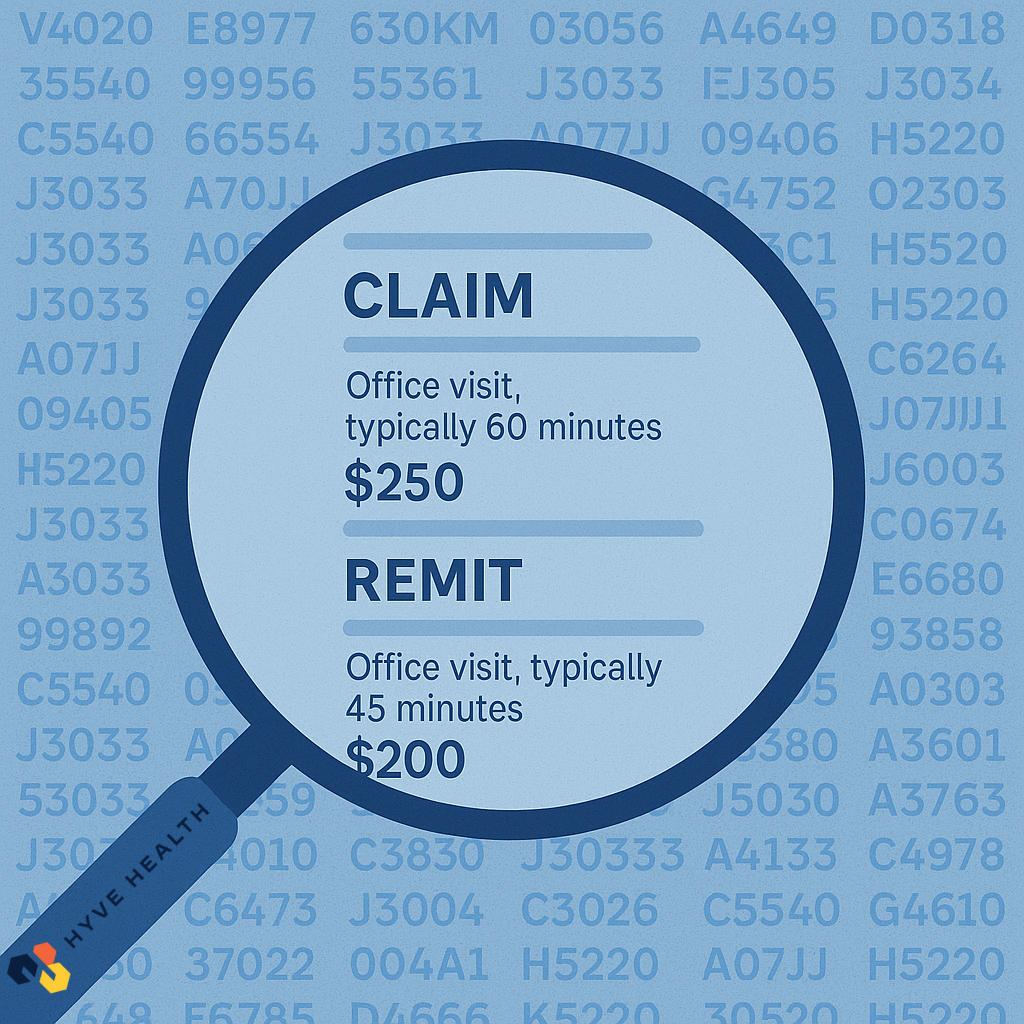Downcoding Is Back and It’s Draining More Than Revenue
Automated payer systems are reviving downcoding, draining revenue and eroding trust. Learn how Hyve uses 837/835 claim data, contract rates, and CDM insights to restore visibility and protect both providers and patient care.

Empowering healthcare providers with collective intelligence to transform the future of healthcare.

Downcoding Is Back and It’s Draining More Than Revenue
If you’ve worked in healthcare for any length of time, you’ve probably encountered downcoding, that familiar frustration when a payer quietly lowers a claim code and reduces payment for the same care you provided. For a while, it seemed like payers had moved away from the practice. Now it’s returning, quietly and persistently, powered by automation.
Why It’s Making a Comeback
Several factors have collided to bring downcoding back into focus. Payers are using automated review systems to “optimize” claims, and those systems can flag or downgrade codes in bulk, often without a person reviewing the clinical documentation. Combine that with cost pressure, opaque decision logic that’s almost impossible to challenge, and inconsistencies in documentation, and you have a problem that grows quietly until it becomes impossible to ignore.
Downcoding is now showing up at scale — occurring in nearly 1 in 12 Medicare Advantage emergency department claims nationally, based on analysis across 900 hospitals over the past year. And that’s only what can be seen when payers actually report it. The real story lies in what isn’t captured: most payers don’t consistently code or disclose when they downcode providers, leaving the true impact largely hidden.
The result is more denials and unexplained downgrades with little transparency, leaving providers frustrated and drained both financially and emotionally. It’s not only about revenue or process; it’s about trust, workload, and the exhaustion of fighting the same issue over and over again.
What This Means for Providers and Patients
Downcoding affects much more than a single payment. It builds over time and slowly changes the rhythm of a practice. Each downgraded claim slows revenue, adds administrative work, and strains billing teams already operating at full capacity. As cash flow tightens, staff spend hours on preventable follow-ups, and clinicians begin to question whether their work is being valued.
When that pressure becomes routine, it begins to touch the people at the heart of care. The constant push to make up for lost revenue forces clinicians to see more patients in less time, and that’s where the real cost appears. Downcoding doesn’t just distort payments; it erodes the attention and trust that define quality care.
How Hyve Health Helps Providers Push Back
At Hyve, we see this challenge across our partner networks. The problem isn’t lack of effort, it’s lack of visibility. You can’t address what you can’t measure, and that is where Hyve steps in.
Strengthen Revenue Integrity
Hyve analyzes historical 837 and 835 data together with your contract rates and Charge Description Master to reveal where payer behavior diverges from what should happen. By surfacing those discrepancies early, Hyve helps teams correct underpayments before they multiply. The result is cleaner claims, fewer surprises, and more predictable reimbursement.
Stay Informed and Proactive
Hyve continuously monitors payer patterns across your claims data so you can see when behavior changes. If a payer begins downcoding a certain service line or strays from contract terms, your team gains visibility quickly enough to act before it affects your bottom line.
Build Negotiation Power
When you understand your claims and payment history in this detail, you move from reacting to leading. Hyve’s analytics give providers the clarity to show exactly where payers are underperforming their contracts, turning anecdotal frustration into evidence that drives better outcomes.
The Bigger Picture
Downcoding is more than a billing issue. It reflects how automation is reshaping the balance between payers and providers. When algorithms decide what care is worth, providers need tools that bring fairness, visibility, and accountability back into the process.
Hyve was built to do exactly that. It restores transparency, protects the integrity of clinical work, and helps providers regain control in a system that too often feels one-sided. When clinicians can focus on patients instead of chasing coding corrections, everyone benefits.
Want to see how Hyve can help your organization catch downcoding before it costs you?
Schedule a conversation with our team and let’s take a closer look together.
